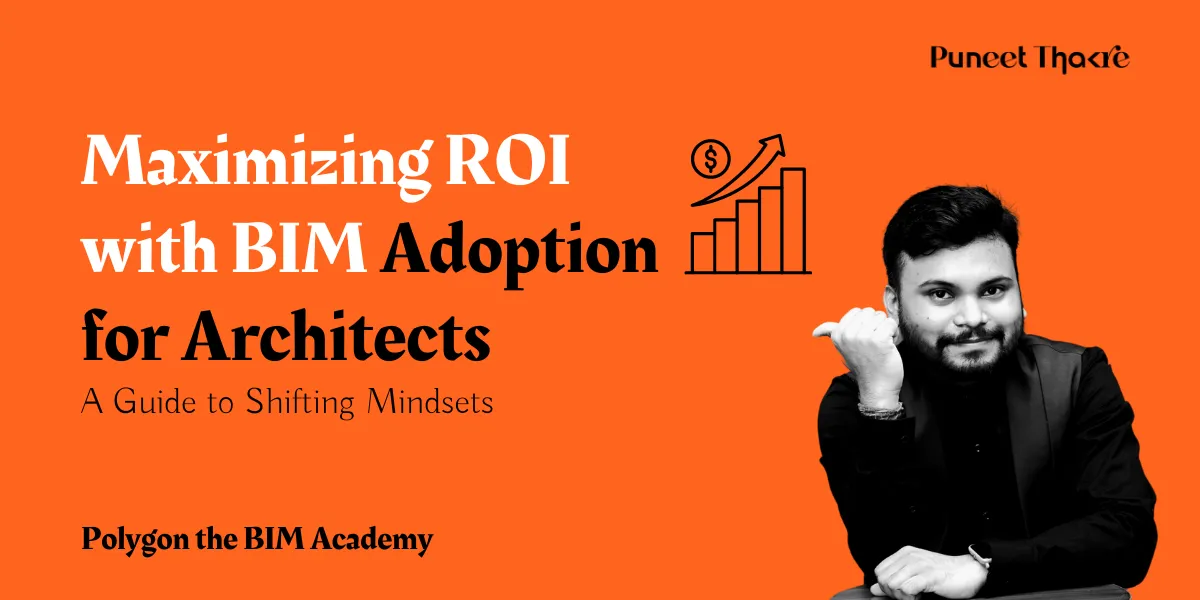#Maximizing ROI with BIM
Hey there, architects and design enthusiasts! Today, we're chatting about something that's not just a buzzword but a real game-changer in our field: Building Information Modeling, better known as BIM. Now, I get it, the thought of diving into BIM can feel a bit like standing at the edge of a high dive, looking down into the deep end of initial investments and wondering if the plunge is worth it. But trust me, it's not just about taking a leap; it's about changing how we approach our projects and, ultimately, how we think about design itself.
So, how can we, as architects, adopt BIM without feeling like we're sinking financially from the get-go? And more importantly, how can we shift our mindset to see BIM not as an optional tool but as an integral part of our present and future in architecture? Let's dive in, shall we?
BIM: Not Just an Option, But a Progression
First things first, let's get one thing straight: adopting BIM isn't just hopping on a new trend; it's stepping up to the next level of architectural design. BIM isn't just about fancy software or 3D modeling; it's a holistic approach that changes how we plan, design, construct, and manage buildings. But, like any significant advancement, it comes with its initial price tag. The key? Viewing this not as a mere cost but as an investment in the future.
The Investment Worth Making
Yes, BIM requires an upfront investment. We're talking about software costs, training sessions, and maybe even a cultural shift within your firm. But let's flip the script here. Instead of seeing this as a sunk cost, think of it as planting seeds for a harvest that's far more bountiful than what traditional methods could yield.
How, you ask? Efficiency is the name of the game. With BIM, you're not just designing; you're building a database of your project, accessible and editable across disciplines. This means fewer errors, less time spent on revisions, and a smoother construction phase. And that, my friends, translates to cost savings and higher profit margins in the long run.
Changing Mindsets: BIM as a Mindful Shift
Adopting BIM isn't just about upgrading your software; it's about upgrading your mindset. It's moving from a 'me' to a 'we' approach, where collaboration and integration become the pillars of your design process. This shift can seem daunting, but it's all about taking it one step at a time. Start small, with pilot projects or specific aspects of your designs, and let the success of these initiatives fuel the broader transition within your firm.
BIM: The Path to Better Designs and Peace of Mind
Now, let's talk benefits. With BIM, you're not just working smarter; you're also designing better. The level of detail and accuracy BIM provides means you can catch potential issues early, innovate with confidence, and push the boundaries of what's possible. And with the ability to juggle more projects efficiently, you're not just expanding your portfolio; you're enhancing your firm's reputation.
But perhaps the most significant advantage? Peace of mind. BIM's predictive nature means you can foresee and mitigate risks, leading to smoother projects and happier clients. And in a world where deadlines are tight and expectations are high, that peace of mind is priceless.
Taking the Plunge Without the Financial Sink
Worried about the initial investment? Here are a few strategies to ease into BIM without breaking the bank:
Leverage Trials and Training: Many software providers offer trial versions and free training resources. Use these to get your team up to speed without upfront costs.
Phase Your Investment: Start with the basics and scale up as you see the returns coming in. This phased approach can make the financial aspect more manageable.
Seek Partnerships: Collaborate with firms or freelancers who are already BIM-savvy. This can help bridge the knowledge gap while you're still getting up to speed.
Utilize Grants and Subsidies: Keep an eye out for government or industry grants aimed at technological adoption. These can significantly offset the initial costs.
In Conclusion: BIM is Not an Option; It's a Progression
As architects, our goal is always to push the boundaries of what's possible, to innovate, and to bring visions to life in the most efficient, sustainable way possible. BIM is the tool that enables us to do just that. Yes, it requires an initial investment, both financially and in terms of learning and adaptation. But the return? It's immeasurable.
We're talking about the ability to deliver better designs, manage more projects efficiently, and, perhaps most importantly, achieve peace of mind knowing that we're utilizing the best tools available to bring our visions to life. BIM isn't just a software or a process—it's a new way of thinking about architecture.
So, dear architects, let's not view BIM as an optional extra but as the essential path forward. It's time to change our mindset, embrace the technology, and enjoy the myriad benefits that come with it. After all, in the world of design, progression isn't just about moving forward; it's about setting new benchmarks for excellence.
And remember, the journey to BIM adoption is a marathon, not a sprint. It's about steady progress, learning from each step, and keeping your eyes on the prize: a future where design meets efficiency in ways we're just beginning to imagine.
So, let's make the shift, embrace the technology, and continue to innovate, design, and inspire. After all, isn't that what being an architect is all about?
Now, I'd love to hear from you! How are you navigating the adoption of BIM in your practice? Have you noticed a shift in your project outcomes or workflow efficiency? Drop a comment below and let's keep the conversation going!
FAQs
Is BIM suitable for small projects? Absolutely! BIM's scalability means it can bring value to projects of any size, enhancing efficiency and coordination even on smaller scales.
Can BIM be adopted mid-project? While it's ideal to start a project with BIM, it's possible to integrate BIM practices into various stages of a project, especially during the design phase.
How long does it take to see a return on investment with BIM? This can vary, but many firms report seeing tangible benefits within the first few projects as efficiency gains and error reductions start to add up.





